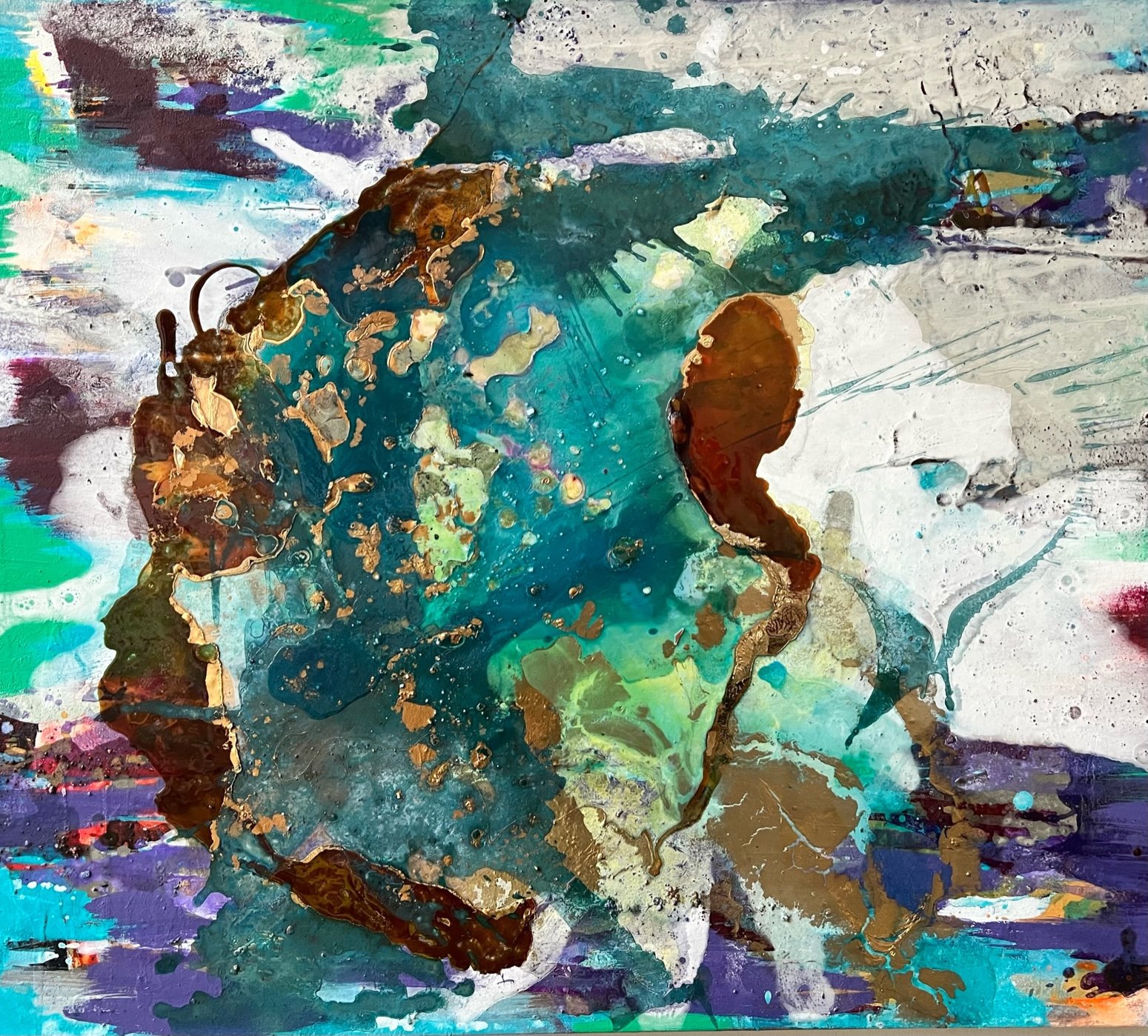Ralph Gelbert
Ralph Gelbert’s canvases explode with exuberant, uninhibited colour, the effect of which can be so striking that viewers may find themselves taking an involuntarily step back. Materiality and presence of colour are at the heart of Gelbert’s painting technique. The context between surface as carrier of meaning and surface as site of the painterly aesthetic event is constantly redefined and recalibrated during the painting process. The artist’s often large-format works fascinate with their boldness of colour and dynamic placement, leaving the viewer feeling as if they are in the presence of a 21st century action painter. Islands of colour, spread across the canvas like a dense archipelago, overlapping, crowding up against and over one another in a way that threatens to overwhelm the viewer. This eruption of colour against the eye has practically nothing at all to do with action painting, however. It is only up close that the complex, multi-layered nature of the painting becomes evident – even within a single work, multiple layers of colour may be found.
The painting techniques employed are likewise numerous, from the conventional to the experimental, broad brushes and fine as well as spray paint. The wealth of detail is astonishing; the eye being drawn into apparently unfathomable depths that suddenly disappear as the surface of the picture reimposes itself. The pictorial space has an intangible, fluctuating quality, becoming a shifting cosmos of fragmented images that reconfigure and resolve themselves once more into a single whole. Colour and form are the central constituents of painting. The emergence of non- representational art in the early part of the 20th century as a logical consequence of the dissolution of the object in movements such as Pointillism and Cubism ensured the primary significance of these elements in the analysis of art, a position they continue to occupy to a greater or lesser extent depending on the prevailing theoretical orthodoxy. Kandinsky’s First Abstract Water colour of 1910 programmatically depicted a radical new world of images for the first time. This breaking away from the visible world and the object brought a new age of analytical examination of form and colour, their interactions and interdependencies at the most diverse levels, culminating in a complex theory of visual communication.
“Gelbert’s works overwhelm the viewer and pursue a painterly strategy that finds its own way to negotiate the demarcation lines of the great schools of the past. At the same time, he is committed solely to his own aesthetic, his own creative drive, constantly discovering surprising, contemporary painterly means of expression that draw on the experiences of generations of painters from the Renaissance to street art.”
- Martin Stather









